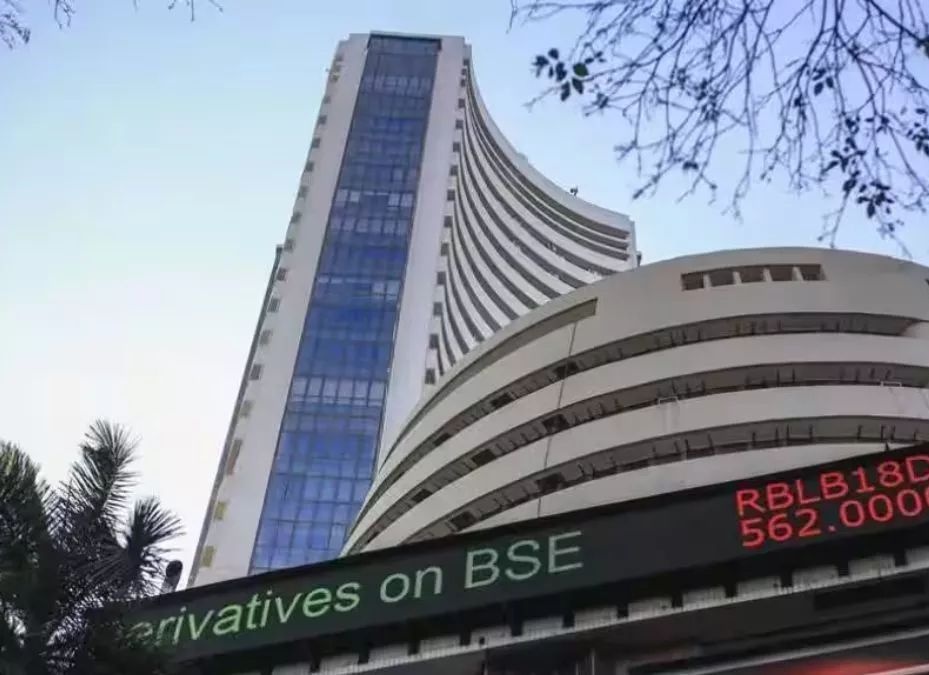Market Summary: Crash Deepens Across Sectors
The Indian equity market witnessed a sharp and broad-based decline on July 11, 2025, with benchmark indices closing deep in the red. The Sensex tanked over 650 points, closing around 82,550, while the Nifty 50 slipped below the psychological 25,200 level, triggering alarm across trading desks. This stock market crash was driven by a combination of factors weak earnings from heavyweight companies, renewed fears of global trade disruptions, a steep rise in crude oil prices, and a significant breach of technical support levels.
Investor sentiment remained fragile throughout the day, with limited attempts at intraday recovery. Market participants, particularly retail investors and short-term traders, faced heightened uncertainty, leading to increased sell-off volumes across sectors.
TCS Earnings Disappointment Sends Shockwaves Through IT Sector
One of the key catalysts for today’s stock market crash was the disappointing first-quarter earnings reported by Tata Consultancy Services (TCS). India’s largest IT company missed street expectations both in terms of revenue and margin performance, reflecting weaker-than-expected global demand and execution delays in certain segments.
TCS shares closed nearly 2.1 percent lower, dragging down the broader Nifty IT index by more than 1.1 percent. The impact was felt across the sector, with Infosys, HCLTech, Tech Mahindra, and Wipro witnessing significant intraday declines. Given the sizeable contribution of IT to benchmark indices, the sector’s underperformance played a pivotal role in dragging markets down.
Moreover, the weak commentary from TCS management regarding global tech spending added further downside pressure, with investors now reassessing sectoral exposure in portfolios.
Global Trade Tensions Return Amid Trump’s 35% Tariff Declaration
The sell-off in Indian equities was exacerbated by renewed concerns over global trade friction. Former U.S. President Donald Trump’s announcement of a 35 percent import tariff on Canadian goods sparked fears of a renewed trade war. Though not directly affecting India, the move signaled a potential return to protectionist policies that could disrupt global supply chains, weaken export demand, and increase input costs for multiple industries.
Global equity markets responded sharply to the news, with overnight futures in the U.S. and European indices slipping into negative territory. Indian markets opened lower in sync with global cues, and the mood remained risk-averse throughout the session. Trade-dependent sectors such as auto components, engineering goods, and chemicals bore the brunt of the uncertainty.
Also Read: Trump’s 35% Tariff Plan Challenges Carney’s Conflict-Averse Trade Strategy
Crude Oil Prices Surge Past $85, Inflation Risks Rise
A sharp surge in Brent crude prices, which climbed past USD 85 per barrel, added another dimension to the ongoing stock market crash. The price rally was fueled by growing tensions in the Middle East and a possible cut in supply from key OPEC nations.
India, being a major net importer of crude, is particularly sensitive to oil price volatility. Higher crude prices exert upward pressure on retail inflation, weaken the Indian rupee, and elevate the current account deficit. Sectors such as aviation, logistics, paints, and fast-moving consumer goods (FMCG) were most affected as investors reassessed cost pressures and margin outlooks.
In addition, the rising crude trajectory heightened fears of a delayed rate cut by the Reserve Bank of India (RBI), further weighing on market sentiment.
Technical Breakdown Below Key Levels Triggers Automated Selling
From a technical perspective, the markets saw a sharp breach of critical support levels. The Nifty 50 broke below the 25,200 level, triggering a series of algorithmic sell orders and stop-loss triggers. The breach of this threshold led to panic selling, particularly among leveraged and short-term traders.
Market analysts highlighted that the breakdown below 25,200 could open the door for further downside toward the 25,000 mark in the near term. Volumes surged in the last hour of trade as institutional players and high-frequency trading systems intensified position unwinding. The Sensex too broke its key moving averages, contributing to overall risk-off sentiment.
Sector and Stock Performance
While the market witnessed a widespread decline, a few pockets managed to withstand the selling pressure. Hindustan Unilever Ltd (HUL) gained over 4 percent following the announcement of a leadership change, with Priya Nair appointed as the next CEO. The market interpreted the move as a sign of renewed strategic clarity.
Glenmark Pharmaceuticals surged nearly 10 percent after signing a licensing agreement with a global healthcare major, bringing some relief to the broader pharma space.
Despite these isolated gains, over 80 percent of stocks on the NSE ended in the red, with a sharp fall seen in mid- and small-cap indices as well.
Market Snapshot: July 11, 2025
| Index/Indicator | Performance |
|---|---|
| Sensex | –654.78 points (–0.79%) |
| Nifty 50 | –204.95 points (–0.81%) |
| Nifty IT | –1.13% |
| Brent Crude | USD 85.24/barrel |
| INR vs USD | 83.76 (weaker by 14 paise) |
Expert View: What Lies Ahead
Market strategists believe that today’s fall, while steep, does not indicate a structural reversal but rather a short-term stock market crash induced by sentiment and global cues. However, if crude continues to rise and earnings disappointments persist, further correction cannot be ruled out.
According to technical analysts, unless the Nifty reclaims 25,250 on closing basis, the downside risk to 25,000 and even 24,900 remains open. Investors are advised to be cautious with leveraged positions and wait for confirmed support levels before re-entering.
Tomorrow’s Outlook: What to Watch
- Crude oil price movement overnight will be key for market tone
- U.S. inflation data and Fed commentary may sway global sentiment
- Tata Elxsi and Wipro results will guide IT stock direction
- Support zone for Nifty is placed at 25,000–25,050
- Banking and pharma sectors may see stock-specific traction
The stock market crash on July 11 reflects a confluence of earnings disappointment, geopolitical uncertainty, inflation fears, and technical breakdowns. While the long-term outlook for Indian equities remains intact, investors must navigate short-term volatility with caution. Keeping portfolios diversified, reducing exposure to overvalued sectors, and focusing on strong balance sheet companies are prudent steps in the current environment.
